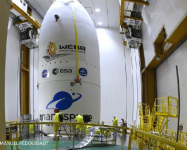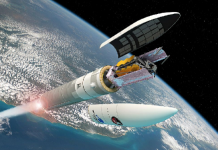So, yes, the planet will survive; we won’t.
Here is a recent op-ed from Scientific American that I enjoyed reading because the perspective is not the one that currently dominates most of the conversation. And no, I'm not buying beach front property. I'm no politician.
Opinion
Humans Are Doomed to Go Extinct
Habitat degradation, low genetic variation and declining fertility are setting Homo sapiens up for collapse
November 30, 2021
EXTINCTION
AUTHOR
Henry Gee is a paleontologist, evolutionary biologist and editor at Nature. His latest book is A (Very) Short History of Life on Earth (St. Martin’s Press, 2021).
Humans Are Doomed to Go Extinct
Credit: Jordan Lye/Getty Images
Cast your mind back, if you will, to 1965, when Tom Lehrer recorded his live album That Was the Year That Was. Lehrer prefaced a song called “So Long Mom (A Song for World War III)” by saying that “if there's going to be any songs coming out of World War III, we’d better start writing them now.” Another preoccupation of the 1960s, apart from nuclear annihilation, was overpopulation. Stanford University biologist Paul Ehrlich’s book The Population Bomb was published in 1968, a year when the rate of world population growth was more than 2 percent—the highest in recorded history.
Half a century on, the threat of nuclear annihilation has lost its imminence. As for overpopulation, more than twice as many people live on the earth now as in 1968, and they do so (in very broad-brush terms) in greater comfort and affluence than anyone suspected. Although the population is still increasing, the rate of increase has halved since 1968. Current population predictions vary. But the general consensus is that it’ll top out sometime midcentury and start to fall sharply. As soon as 2100, the global population size could be less than it is now. In most countries—including poorer ones—the birth rate is now well below the death rate. In some countries, the population will soon be half the current value. People are now becoming worried about underpopulation.
As a paleontologist, I take the long view. Mammal species tend to come and go rather rapidly, appearing, flourishing and disappearing in a million years or so. The fossil record indicates that Homo sapiens has been around for 315,000 years or so, but for most of that time, the species was rare—so rare, in fact, that it came close to extinction, perhaps more than once. Thus were sown the seeds of humanity’s doom: the current population has grown, very rapidly, from something much smaller. The result is that, as a species, H. sapiens is extraordinarily samey. There is more genetic variation in a few troupes of wild chimpanzees than in the entire human population. Lack of genetic variation is never good for species survival.
What is more, over the past few decades, the quality of human sperm has declined massively, possibly leading to lower birth rates, for reasons nobody is really sure about. Pollution—a by-product of human degradation of the environment—is one possible factor. Another might be stress, which, I suggest, could be triggered by living in close proximity to other people for a long period. For most of human evolution, people rode light on the land, living in scattered bands. The habit of living in cities, practically on top of one another (literally so, in an apartment block) is a very recent habit.
Another reason for the downturn in population growth is economic. Politicians strive for relentless economic growth, but this is not sustainable in a world where resources are finite. H. sapiens already sequesters between 25 and 40 percent of net primary productivity—that is, the organic matter that plants create out of air, water and sunshine. As well as being bad news for the millions of other species on our planet that rely on this matter, such sequestration might be having deleterious effects on human economic prospects. People nowadays have to work harder and longer to maintain the standards of living enjoyed by their parents, if such standards are even obtainable. Indeed, there is growing evidence that economic productivity has stalled or even declined globally in the past 20 years. One result could be that people are putting off having children, perhaps so long that their own fertility starts to decline.
An additional factor in the shrinking rate of population growth is something that can only be regarded as entirely welcome and long overdue: the economic, reproductive and political emancipation of women. It began hardly more than a century ago but has already doubled the workforce and improved the educational attainment, longevity and economic potential of human beings generally. With improved contraception and better health care, women need not bear as many children to ensure that at least some survive the perils of early infancy. But having fewer children, and doing so later, means that populations are likely to shrink.
The most insidious threat to humankind is something called “extinction debt.” There comes a time in the progress of any species, even ones that seem to be thriving, when extinction will be inevitable, no matter what they might do to avert it. The cause of extinction is usually a delayed reaction to habitat loss. The species most at risk are those that dominate particular habitat patches at the expense of others, who tend to migrate elsewhere, and are therefore spread more thinly. Humans occupy more or less the whole planet, and with our sequestration of a large wedge of the productivity of this planetwide habitat patch, we are dominant within it. H. sapiens might therefore already be a dead species walking.
The signs are already there for those willing to see them. When the habitat becomes degraded such that there are fewer resources to go around; when fertility starts to decline; when the birth rate sinks below the death rate; and when genetic resources are limited—the only way is down. The question is “How fast?”
I suspect that the human population is set not just for shrinkage but collapse—and soon. To paraphrase Lehrer, if we are going to write about human extinction, we’d better start writing now.









